MARKET ANALYSIS: 2021 was a year of massive contrasts for the Australian truck industry. Yet despite all the undeniable hassles and hardships, truck sales defied the dramas with near-record results recorded by those brands able to make the most of difficult conditions. Typically, Isuzu and Kenworth ruled their respective roosts but they weren’t the only players to kick goals in a rough game
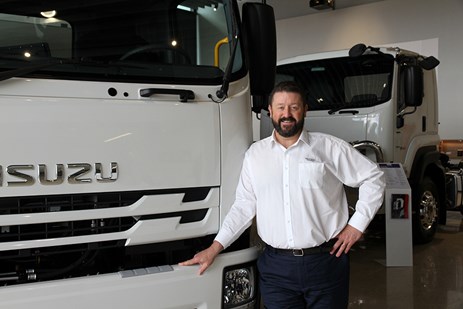 |
|
Winners are grinners. Isuzu Australia chief Andrew Harbison. Isuzu’s mastery of the total truck market is epic in both duration and scale
|
Charles Dickens said it best in his 19th Century classic, A Tale of Two Cities: ‘It was the best of times, it was the worst of times.’
Absolutely, and it’s a fair bet that more than a couple of corporate leaders might now be thinking along those exact lines.
Take Paccar Australia boss Andrew Hadjikakou, for example. A few months back, he willingly acknowledged that with COVID constraints unrelenting, 2021 was proving to be tougher than the year before. On the other hand, as the Truck Industry Council’s (TIC) end-of-year figures attest, Kenworth’s domination of the heavy-duty class in 2021 was not only vastly more entrenched, but tantalisingly close to surpassing the brand’s best-ever result achieved in the phenomenally strong market of 2018.
In fact, so strong was the national demand for new trucks on the back of an essential freight sector and government financial incentives that, according to a TIC statement, ‘… the overall tally for 2021 fell a mere 225 trucks short of a new Australian heavy vehicle sales record. Oh so close! That sales record is still held by 2018.’
Easily topping the heavy-duty chart, Kenworth in 2021 rolled 2838 trucks down the Bayswater (Vic) production line for a commanding 21.8 per cent of a total heavy-duty category which saw a buoyant and altogether surprising 12,999 units delivered. By comparison, 2020 saw slightly more than 10,600 new heavy-duty trucks enter the market.
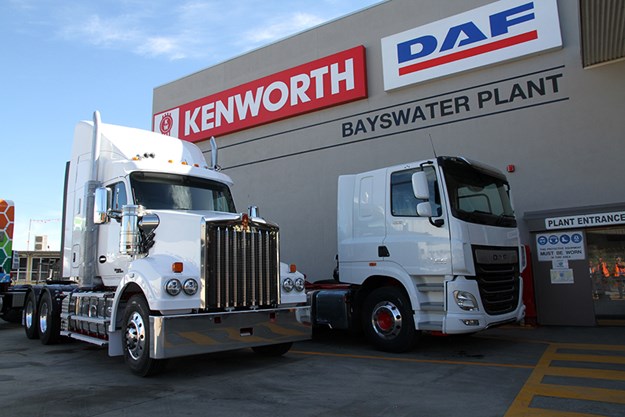 |
|
Paccar pair. Kenworth again dominated the heavy-duty sector but it was corporate colleague DAF which set a new record
|
However, Paccar Australia’s stellar performance didn’t end there. Corporate colleague DAF set a new record for the brand with 682 new trucks delivered, accounting for 5.2 per cent of the Australian heavy-duty category and in the process, giving Paccar Australia its greatest ever sales figures.
Consequently, Paccar won the corporate contest hands down with Kenworth and DAF combining to take 27 per cent of the total heavy-duty market, significantly ahead of the Volvo Group Australia (VGA) triumvirate on 22 per cent and an ambitious Daimler Trucks trio on 17.2 per cent.
In the big picture though, the truly big player was once again Isuzu, adding another notch on a belt that now carries more than three decades of consecutive leadership of the total Australian truck market.
In the heavy-duty category, only Kenworth and Volvo were ahead of Isuzu’s 11.7 per cent stake but it was, of course, in its historic leadership of medium and light-duty sectors where the Japanese brand’s greatest numbers were gathered, taking 41.5 and 39 per cent respectively.
All up, Isuzu delivered 10,175 trucks in 2021, notably better than even its record-breaking effort in the bumper year of 2018.
Quite simply, the resilience and acceptance of this brand are nothing short of ‘epic’, and as hard as they might try with high quality models, Hino’s and Fuso’s chances of catching and then overtaking their Japanese competitor continue to seem as distant as partisan politics.
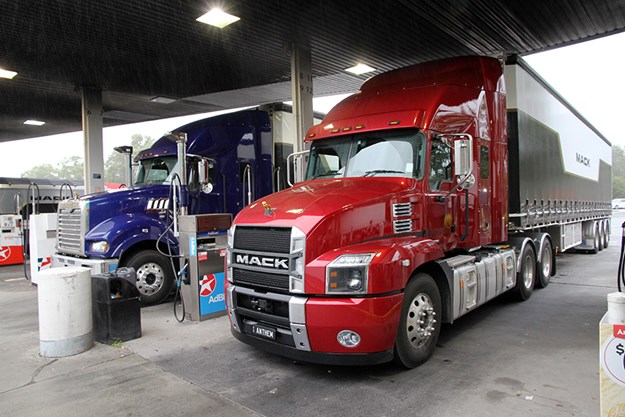 |
|
Dismal days for the bulldog. Mack’s performance in 2021 was arguably the worst in living memory
|
In a total 2021 truck market – including heavy vans – of 41,404 units, almost one in four new vehicles was an Isuzu. True to form, Hino finished second in the overall sales race and Fuso third, with both brands also achieving exceptionally strong sales last year.
It was, however, the congested heavy-duty market where the ability of some brands to withstand the challenges of 2021 far better than others, was most evident.
Supply issues
As almost every industry can vouch, COVID has had a dramatic impact on supply routes from overseas and truck brands, whether fully imported or manufactured locally, certainly haven’t been excluded from component shortages which continue to baulk production both here and overseas.
Additionally, truck demand is globally strong, meaning some fully imported brands must battle hard for production slots to avoid losing customers to increasingly stretched delivery schedules. Still, it’s an issue not confined to importers alone.
Most truck brands are reporting extremely strong order banks for 2022 and even well into 2023, but as one senior executive with a major heavy-duty brand recently exclaimed, “Right now, it’s a lot easier to take an order for a new truck than it is to actually deliver a new truck.”
 |
|
A record year for Mercedes-Benz has seen the brand move into several fleet accounts traditionally held by competitors
|
Moreover, as the representative body for Australia’s truck and component suppliers, the Truck Industry Council concedes, ‘… the road ahead is neither clear nor certain (and) domestic and global supply chain issues look to be the greatest threat to new truck and van supply over the next 24 months. This situation will not be resolved quickly.’
Even so, as 2021’s heavy-duty figures assert on the strength of some brands achieving significant gains while others appeared to languish, supply issues are perhaps becoming an increasingly thin excuse for lost opportunity and long delays.
Holding onto its perennial bridesmaid’s berth behind heavy-duty supremo Kenworth, Volvo struggled in 2021 and despite notably stronger market demand than the year before, the Swedish powerhouse was unable to make the most of considerable potential.
All up, Volvo delivered 1683 new trucks in 2021 for a comparatively lacklustre 12.9 per cent of the heavy-duty business. It was a far cry from the 16.4 per cent achieved in 2020 on the delivery of 1740 trucks.
But if Volvo’s figures were less than enthralling, corporate colleague Mack’s numbers were absolutely dismal. In what was arguably the bulldog breed’s worst performance in living memory, Mack accounted for a meagre 4.4 per cent of the heavy-duty sector, delivering just 566 units. By comparison, in the sizeably smaller market of 2020, the famous brand delivered 705 trucks for 6.6 per cent of the market.
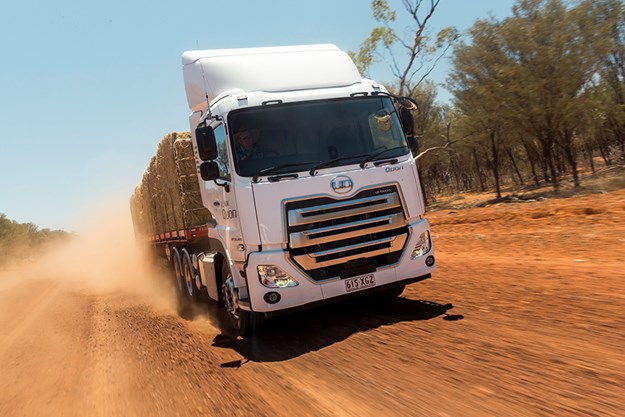 |
|
Bright light. In a troubled year for Volvo Group Australia, UD was a standout performer
|
Volvo and Mack are, of course, produced at VGA’s Wacol (Brisbane) production plant and their mediocre performances in 2021 are perhaps made even more disturbing for company principals by the fact that both brands promoted new models through the year – Volvo’s new FH and FM range and Mack’s Anthem – seemingly with little effect.
There was, however, a distinctly bright light for VGA in 2021 with the fully imported and much respected UD brand notching a record year with 611 units for a 4.7 per cent stake of the heavy-duty class, plus another 166 deliveries in the medium-duty sector.
Yet given its historically fierce competitive streak, there’s little doubt Volvo will kick back. Hard! It won’t be easy though, with arch rivals Mercedes-Benz and Scania making the most of opportunities and digging deep into Volvo accounts. They will not give up their gains without a vicious fight.
On the strength of reports citing good fuel economy, potent performance and a suite of advanced safety features, Mercedes-Benz has been growing in prominence over a number of years and as 2021 drew to a close it was apparent this would be something of a milestone year for the brand.
Finishing fourth on the heavy-duty ladder with 9.4 per cent of the class, Mercedes-Benz was quick to broadcast a record achievement for the brand, setting ‘… a new high mark of 1290 (a figure which included 72 deliveries in the medium-duty sector), breaking the previous record of 1189.
‘Sales were so strong that Mercedes-Benz passed the milestone with one month to spare,’ a company statement reported.
Critically, the statement added, ‘The striking result came despite supply disruptions that took some heat out of sales in the last few months of the year.’
RELATED ARTICLE: Fuso boasts best ever Australian sales year
The Benz figures were, however, just one part of a bountiful year for corporate master, Daimler Truck and Bus Australia.
Dominating the numbers was Japanese cohort Fuso, setting an all-time sales record for the brand on the delivery of 4770 trucks across light, medium and heavy-duty categories to cap off a year of important new model introductions which included the electric eCanter and new 360 and 510hp versions of the flagship Shogun range.
According to a bold company claim, ‘Fuso not only posted its best-ever new truck sales in Australia, but was also the fastest growing truck manufacturer in the Australian market last year (and) increased its share in light, medium and heavy-duty market segments.’
The other high profile member of the Daimler trio is obviously Freightliner but with just 439 deliveries and a modest 3.4 per cent of the heavy-duty category in 2021, the new Cascadia conventional has some way to go before realising the sales figures its advocates are hoping for.
Sure, it’s still early days but 2022 could be a telling time for Cascadia in Australia and numbers will need to grow markedly for the model to meet ambitious corporate goals.
 |
|
On the rise. Bigger things are expected of Hino in 2022 with its new 700-series heavy duty models
|
Finishing fifth in the overall heavy-duty arena, Scania’s rise in recent years was further strengthened in 2021 with a respectable performance which delivered 1129 units for an 8.7 per cent stake in the category.
Nonetheless, senior insiders at Scania Australia have expressed disappointment that the brand’s true potential fell short of expectations. After strong gains throughout the year, the last month of 2021 was particularly frustrating as solid demand outstripped supply, causing the brand to fall an agonising 12 trucks short of recording its best-ever figures in Australia.
Even so, Scania is on a roll like never before and with bold new models on the way, competitors will find it hard to keep ‘the other Swede’ at bay.
Easily the best of the heavy-duty ‘also rans’ was Toyota’s Hino with 583 units and 4.5 per cent of the sector. Bigger things are expected this year with an impressive range of 700-series heavy-duty models starting to hit the market in increasing numbers.
In the overall market though, Hino is an established major player, ranking second only to Isuzu. Admittedly, with a collective figure of 6251 deliveries and 15.1 per cent of the total truck market in 2021, Hino is a long way behind the entrenched market leader but at least maintains a healthy buffer ahead of third placed Fuso.
As always, the ongoing contest between the market’s two biggest placegetters will be intriguing.
Back of the pack
Moving down the heavy-duty chart, pickings were slim for the cellar dwellers but undeniably better for a few.
Western Star, for instance, had a notably better year in 2021 with 373 deliveries giving it 2.9 per cent of the heavy-duty class. The numbers aren’t great but they’re certainly a healthy jump on 2020’s drab figures of 228 deliveries and 2.1 per cent.
 |
|
Better than before. Western Star picked up pace in 2021 but it’s still a long way from the pre-Penske glory days. New models are one the way
|
What’s more, there’s some expectation that 2022 could be a year of improved substance for Western Star as the brand’s local leaders plan for the launch, either late this year or early next, of the new 47X and 49X models developed by Daimler Trucks North America.
There’s also speculation that ultimately, Western Star’s local business may find its way back into the Daimler fold as Roger Penske’s Australian operations appear to recede. Time will tell, but there’s no question Western Star’s performance has waned dramatically since the American mogul took control almost a decade ago and that fact certainly hasn’t gone unnoticed in the US.
The other brand operating under the Penske banner is MAN and like Western Star, the German truck did better in 2021. All up, MAN delivered 387 trucks last year, with 309 heavy-duty units giving it 2.4 per cent of the market.
Rounding out the Penske trio is waste industry specialist Denis Eagle which, with 108 units for the year – and no doubt capitalising to some extent on the waning influence of Iveco’s ACCO – more than doubled its 2020 numbers.
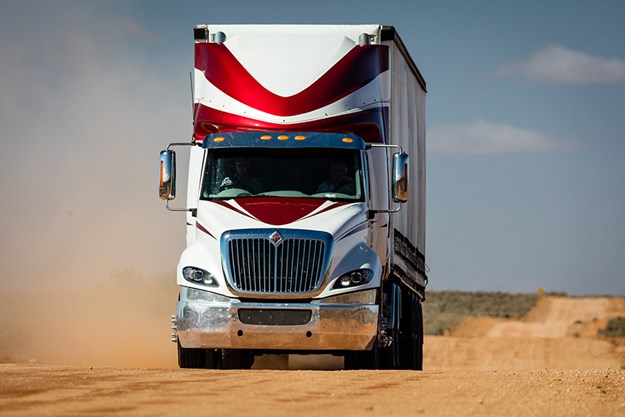 |
|
End of the line. The International venture finally came to a close in 2021. Ironically, the same year the end of production at the Dandenong (Vic) manufacturing plant was announced
|
As for Iveco, its performance in 2021 provides a graphic insight into the dynamics of a brand undergoing evolutionary change, apparently morphing from its heavy and medium-duty roots into a light-duty specialist.
In addition to announcing at the close of last year that 2022 will see the end of truck production at the Dandenong (Vic) factory which has built trucks since 1952, Iveco last year lost considerable ground in both heavy and medium-duty segments but at least picked up business in the light-duty and van categories.
Even so, the brand delivered fewer vehicles in 2021 than the year before.
Meantime, Korean hopeful Hyundai picked up sales in every category in 2021.
Sure, the numbers weren’t great and the bulk of the business was in the burgeoning light-duty class, but in 2021 Hyundai delivered a total of 232 units compared to 135 the year before.
Finally, in a somewhat forlorn finale, International was at the tail of the field with 24 units, marking the end of the line for the brand’s Australian venture.
Given the pending demise of the Dandenong plant, it is indeed the end of the line for a brand which was once a household name in Australia.
